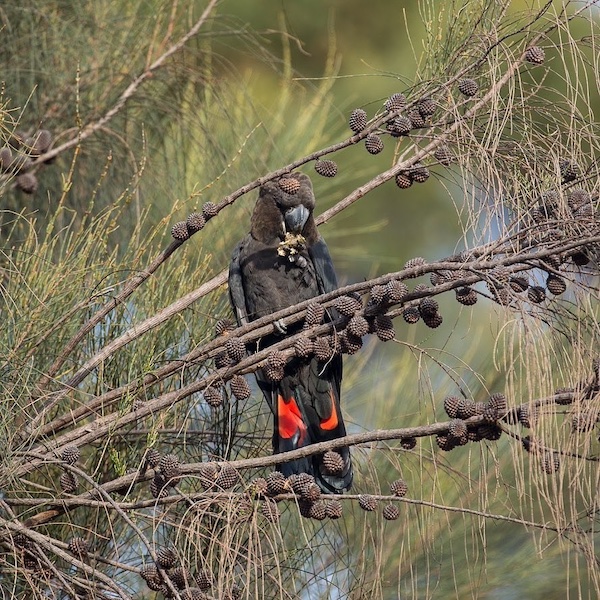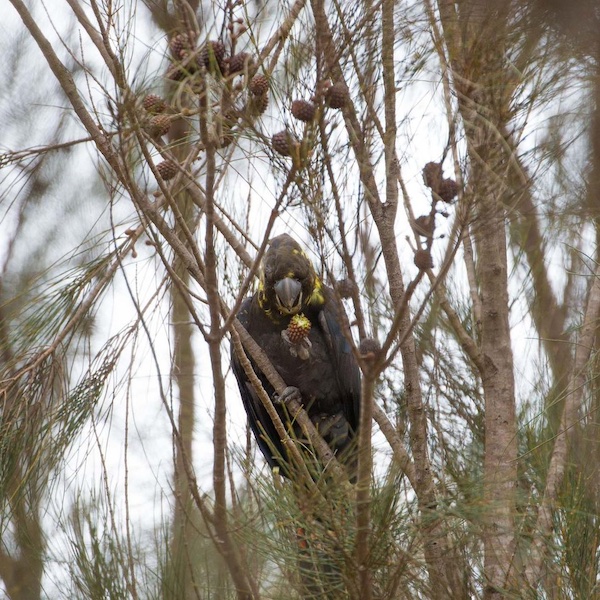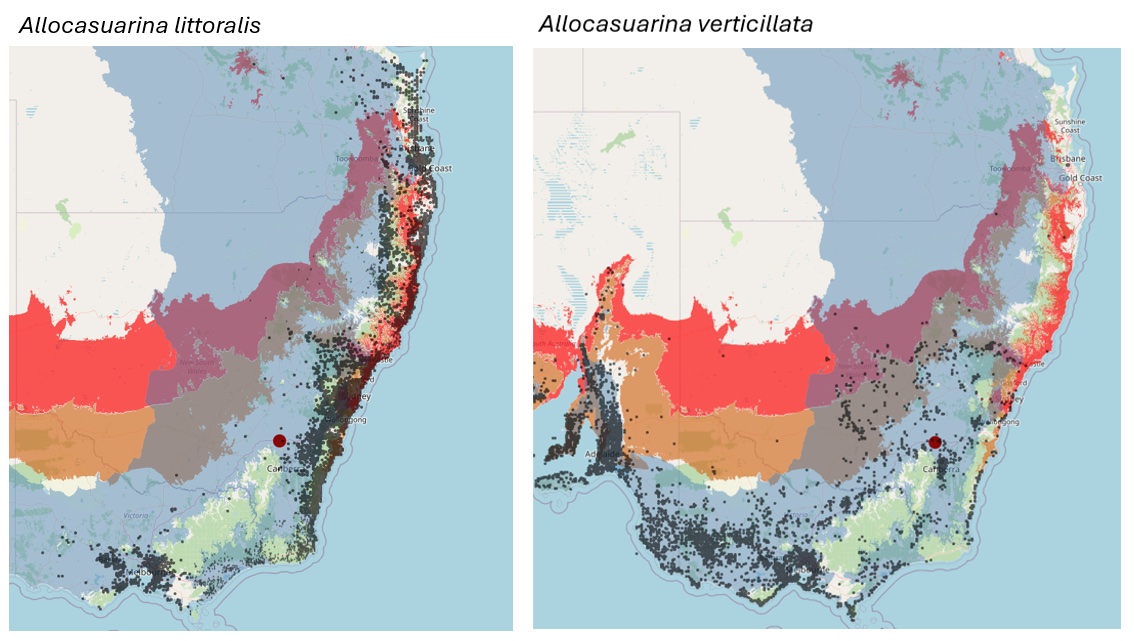As we celebrate Threatened Species Day, it's important to shine a spotlight on the vulnerable Glossy Black-Cockatoo, a spectacular bird that depends on our efforts for its survival. One of the most effective ways to support this species is by planting its favourite food source, the Allocasuarina trees.
A Specialised Diet
The Glossy Black-Cockatoo has a highly specialised diet, feeding almost exclusively on the seeds of she-oaks (Allocasuarina and Casuarina species). Although they feed on at least nine species of she-oak across their range, within local areas, their feeding is often restricted to a single species. In South-East Queensland and North-Eastern New South Wales, they show a distinct preference for the Black She-oak (Allocasuarina littoralis) but will also eat seed for the Drooping She-oak (Allocasuarina verticillate).

A Call to Action for Landholders
Your local YAN Landcare nurseries grow both Allocasuarina littoralis and Allocasuarina verticillata. This is a fantastic opportunity for landholders to create new feeding areas for the Glossy Black-Cockatoo by planting these essential trees.

Why Allocasuarina littoralis?
Allocasuarina littoralis is a versatile and resilient tree that can thrive in a variety of soil types, from sandy soil to heavy clay and rocky ground. It is perfect for ridgelines and anywhere in between, growing to a mature height of 5-15 meters. By planting Allocasuarina littoralis, you can help ensure that the Glossy Black-Cockatoo has a reliable food source throughout the year.
The Drooping She-oak: Another Option
In addition to Allocasuarina littoralis, YAN nurseries also grows Allocasuarina verticillata (Drooping She-oak), which naturally occurs in the Yass Valley. This tree grows to a height of 4-10 meters and is particularly suited to ridgelines, making it another excellent choice for supporting the Glossy Black-Cockatoo.

Images: Distrubution map of A.littoralis & A. verticillata
Planting Tips
When planting these trees, remember that they are dioecious, meaning they have separate male and female plants. To ensure seed production, you'll need to plant several trees in close proximity. Small groups are best for encouraging seed set and providing ample food for the cockatoos.
How to Get Involved
To contribute to the survival of the Glossy Black-Cockatoo, consider pre-ordering some Allocasuarina littoralis or Allocasuarina verticillata for your autumn planting through the YAN Online Plant Request Form. By doing so, you can help create new areas of food sources for these beautiful birds.
Further information about the Glossy Black Cockatoo can be found at the Glossy Black Conservancy Website glossyblack.org.au
Together, we can make a difference in preserving the Glossy Black-Cockatoo and ensuring its continued presence in our environment. This Threatened Species Day, let's commit to planting the trees that these birds rely on and protect one of our most vulnerable native species.
Written by Sarah McGrath, Coordinator Yass Area Network of Landcare Groups
Photo credit: Glossy Black Cockatoo, Glossy Black Conservancy
